Recognition
Although often overlooked, America’s engagement with Muslims and Muslim cultural heritage goes back to the country’s earliest days and has touched many core American institutions, from the Marines’ Mameluke sword to the Supreme Court building. Below are a sampling of historic examples of encounter and recognition.
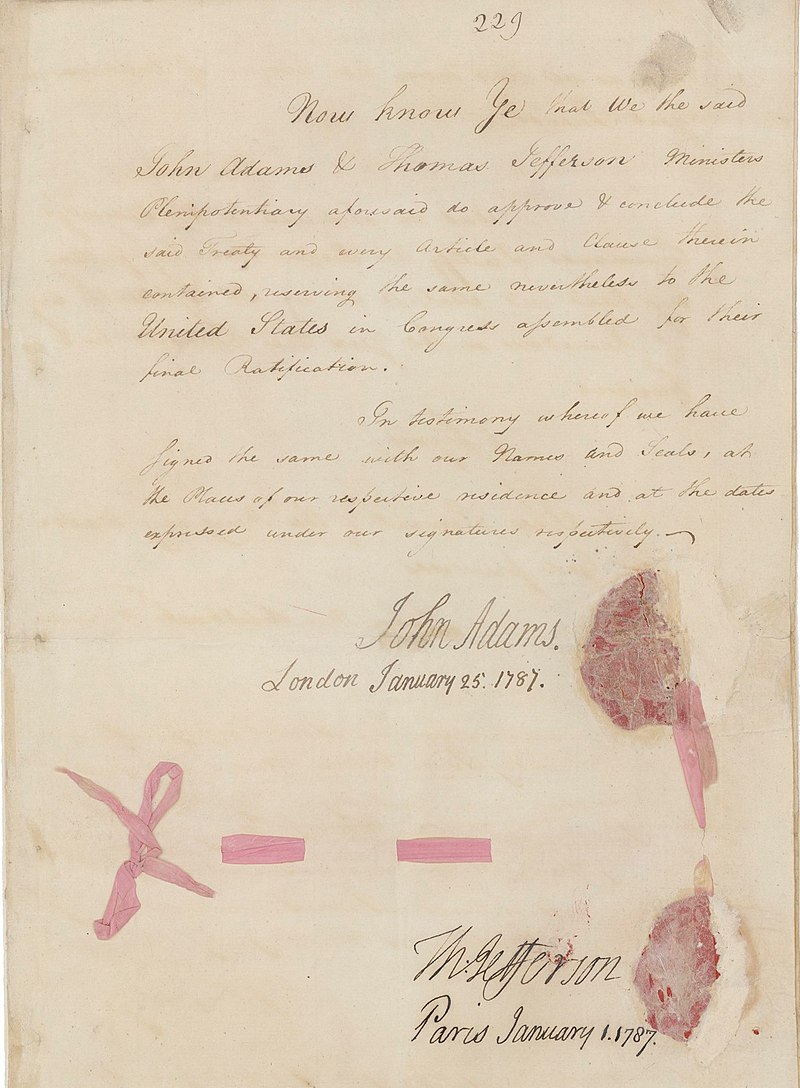
Morocco the First Foreign Country to Recognize the US
In 1777, just a year after the Declaration of Independence, Morocco’s Sultan Muhammad III announced that Morocco’s ports were open to American ships–thus becoming the first foreign ruler to recognize the new United States of America. In 1786, Morocco and the US formalized their partnership via the Moroccan-American Treaty of Friendship, signed by Thomas Jefferson and John Adams. The treaty, still in effect over 230 years later, is the longest unbroken foreign agreement in US history. In 1821, to celebrate these historic ties, Morocco’s ruler, Sultan Moulay Suliman, gifted the American Legation in Tangiers to the US. It became the first international property owned by the US and for 140 years served as the local US Consulate. Today it is the only National Historic Landmark located in a foreign country.
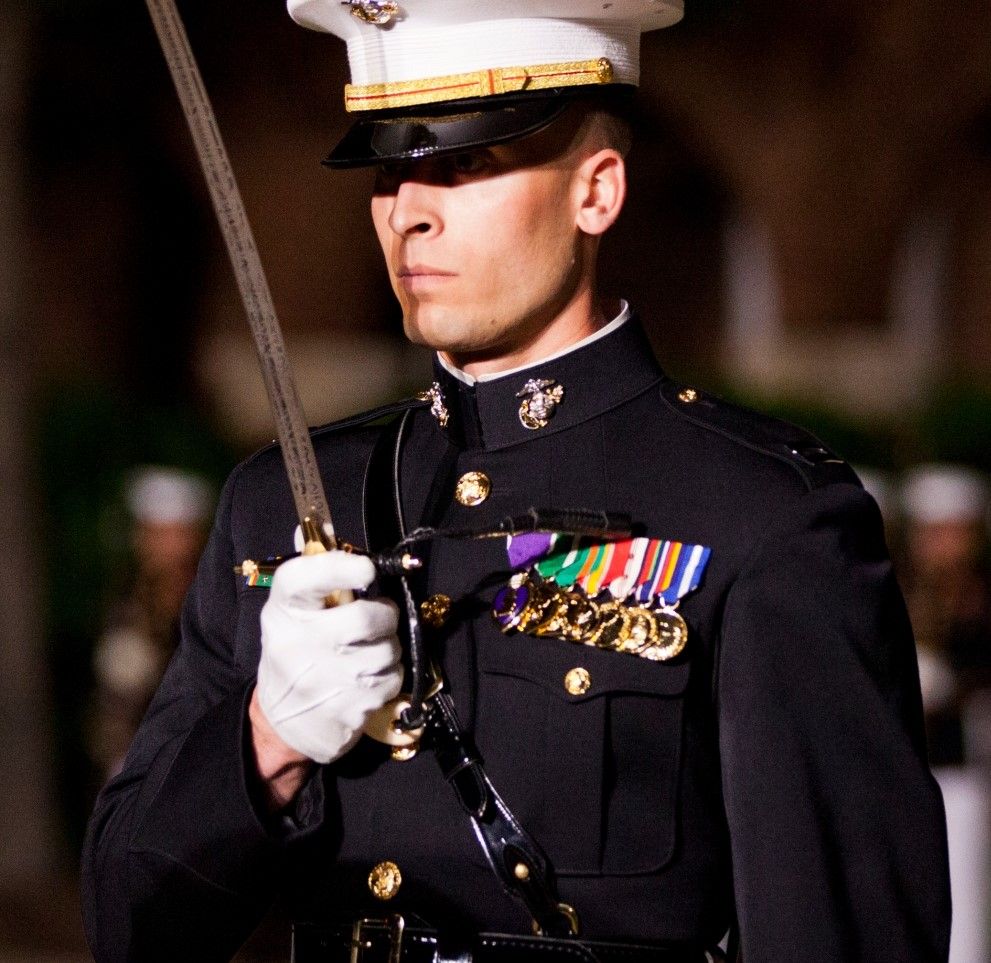
The Marines’ Mameluke Sword
Just a few years after the Moroccan-American Treaty of Friendship was signed, Americans found themselves engaged in a military effort against North Africa pirates–what became known as the First Barbary War. The decisive event in that campaign was the 1805 Battle of Derna, where US Marines fought the first US foreign land battle along the coast of Libya. The campaign –memorialized in the Marines’ Hymn line about the “shores of Tripoli”– marked the first time the American flag was raised in victory abroad. In gratitude for the Marines’ intervention, the Ottoman viceroy Prince Hamet Karamanli presented a mameluke sword to Marine First Lieutenant Presley O’Bannon. To commemorate the legendary victory, the Marine Corps in 1825 made the mameluke sword part of the official dress uniform of all Marine officers, a tradition that remains until today.
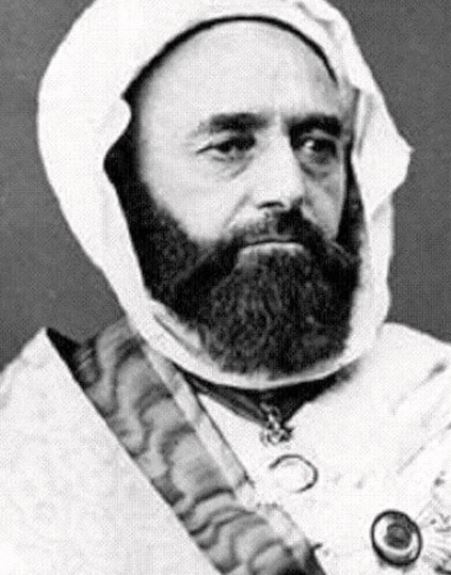
American Town Inspired by Muslim Struggling against Colonial Rule
Many towns across the US have names that seem to be inspired by Muslim tradition, including Mahomet, Illinois; Medina, Washington; and Mecca, California. In many cases, the origin of these town names is shrouded in mystery. Yet in the case of Elkader, Iowa ,the roots are clear. In 1846, Elkader’s founders decide to name their new town after Abdelqadir al-Jaza’iri, a charismatic Algerian resistance leader challenging French colonial rule. Evidently his story resonated with America’s own struggle against British colonial rule, inspiring pioneers in Iowa several thousand miles away from North Africa.
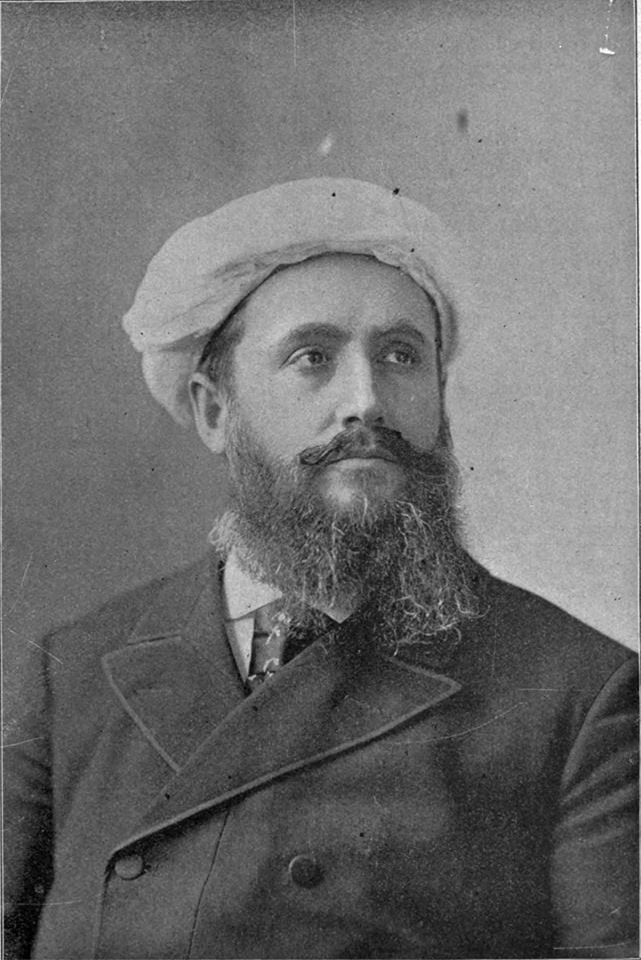
A US Diplomat Launches America’s First Muslim Magazine
American diplomat Mohammed Alexander Russell Webb, who served the U.S. Consul to the Philippines in the late 19th Century, became one of the earliest American converts to Islam. Webb began publishing he first Muslim magazine in America, called Moslem World. He also represented Islam at the 1893 World’s Parliament of Religions in Chicago.
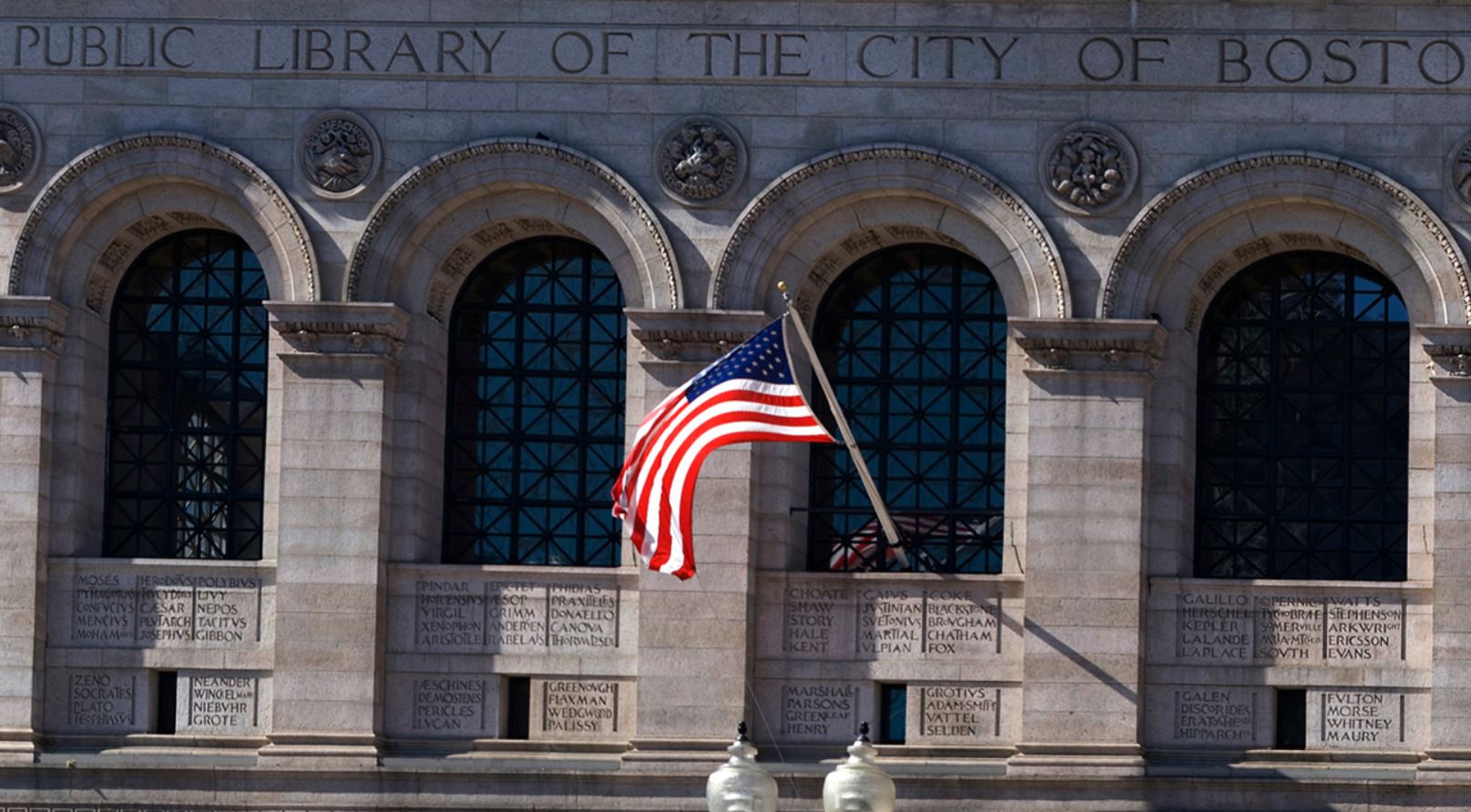
The Supreme Court, the Library of Congress, and the Boston Public Library
Boston is home to America’s oldest public library. When the city built a grand new main library complex in 1895, the designers chose to chisel the names of great thinkers throughout history on the exterior of the edifice. One of the names above the main entrance: “Mohammet.” Around the same time, the Library of Congress constructed its grand new Thomas Jefferson Building. The dome over the building’s main reading room features a mural of twelve figures representing epochs that were considered to have contributed to western civilization. One of the twelve figures depicts Islam, which was understood to represent the field of physics in recognition of the legendary Muslim scholars who pioneered entire fields of mathematics and science.
In 1935, a new Supreme Court building opened in Washington, DC. The formal courtroom featured marble friezes along the top of the south and north walls featuring the “great law givers of history ”who shaped the development of law in history. Second from right on the north wall frieze, the architects depicted Muhammad holding the Qur’an. As the court building’s official guide notes: “The figure above is a well-intentioned attempt by the sculptor, Adolph Weinman, to honor Muhammad and it bears no resemblance to Muhammad. Muslims generally have a strong aversion to sculptured or pictured representations of their Prophet.”
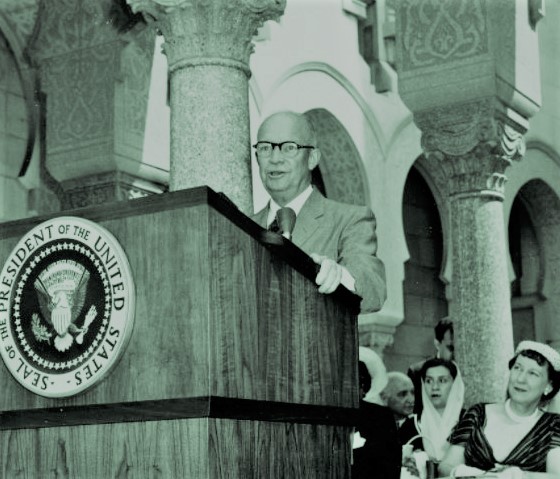
President Eisenhower Dedicates the Islamic Center of Washington
On June 28, 1957, President Dwight Eisenhower formally dedicated the Islamic Center of Washington, marking perhaps the first time an American president visited and spoke at a mosque. Eisenhower used the occasion to underscore America’s tradition of religious liberty and recognize the historic contributions of Muslim innovators.
His remarks noted:“Under the American Constitution, under American tradition, and in American hearts, this center, this place of worship, is just as welcome as could be a similar edifice of any other religion. Indeed, America would fight with her whole strength for your right to have here your own church and worship according to your own conscience. This concept is indeed a part of America, and without that concept we would be something else than what we are…“ Civilization owes to the Islamic world some of its most important tools and achievements. From fundamental discoveries in medicine to the highest planes of astronomy, the Muslim genius has added much to the culture of all peoples. That genius has been a wellspring of science, commerce, and the arts and has provided for all of us many lessons in courage and in hospitality.”
